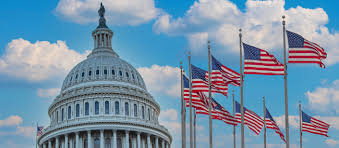
Breaking News
 GM's LMR battery breakthrough means more range at a lower cost
GM's LMR battery breakthrough means more range at a lower cost
 CPI Better than Expected Thanks to a Drop in the Price of Food
CPI Better than Expected Thanks to a Drop in the Price of Food
Top Tech News
 Cab-less truck glider leaps autonomously between road and rail
Cab-less truck glider leaps autonomously between road and rail
 Can Tesla DOJO Chips Pass Nvidia GPUs?
Can Tesla DOJO Chips Pass Nvidia GPUs?
 Iron-fortified lumber could be a greener alternative to steel beams
Iron-fortified lumber could be a greener alternative to steel beams
 One man, 856 venom hits, and the path to a universal snakebite cure
One man, 856 venom hits, and the path to a universal snakebite cure
 Dr. McCullough reveals cancer-fighting drug Big Pharma hopes you never hear about…
Dr. McCullough reveals cancer-fighting drug Big Pharma hopes you never hear about…
 EXCLUSIVE: Raytheon Whistleblower Who Exposed The Neutrino Earthquake Weapon In Antarctica...
EXCLUSIVE: Raytheon Whistleblower Who Exposed The Neutrino Earthquake Weapon In Antarctica...
 Doctors Say Injecting Gold Into Eyeballs Could Restore Lost Vision
Doctors Say Injecting Gold Into Eyeballs Could Restore Lost Vision
 Dark Matter: An 86-lb, 800-hp EV motor by Koenigsegg
Dark Matter: An 86-lb, 800-hp EV motor by Koenigsegg
 Spacetop puts a massive multi-window workspace in front of your eyes
Spacetop puts a massive multi-window workspace in front of your eyes
The "One Big Beautiful Bill" Will Continue Spending at Biden's Level

Republicans Surrender
Please note The GOP Surrenders on Medicaid
The House bill shrinks from a fight over able-bodied men on the dole.
The work requirement doesn't kick in until 2029—a political lifetime from now. The bill also sets up a waiver process, which states have long abused to evade work rules in food stamps.
But far more notable is that the bill fails to end Medicaid's outrageous bias toward prime-age men who can work. The feds pay 90% of the cost of able-bodied adults eligible for Medicaid under the Affordable Care Act—but only roughly 50% to 77% (depending on the state) for pregnant women, the blind and so on.
Republicans won't even insist that able-bodied persons must work.
Pathetic.
The Ugly Truth About the 'Big Beautiful Bill'
Senator Ron Johnson (R. WI) explains The Ugly Truth About the 'Big Beautiful Bill'
The "One Big Beautiful Bill" that Congress is working on is certainly big, but beauty is in the eye of the beholder. Too often the reality of these budget debates get obscured in details, politically charged issues and demagoguery. Let me attempt to clarify the current discussion by focusing on the most important facts and numbers.
In fiscal 2019, federal outlays totaled $4.45 trillion, or 20.6% of gross domestic product. This year, according to the Congressional Budget Office's January 2025 projection, total outlays will be $7.03 trillion, or 23.3% of GDP. That's a 58% increase over six years. The CBO projects federal outlays will total $89.3 trillion across fiscal 2026-35. Much of the blame goes to pandemic spending, but lockdowns are long over. There's nothing now to justify this abnormal level of government spending. Pathetically, Congress is having a hard time agreeing on a reduction of even $1.5 trillion from that 10-year amount. That's a 1.68% cut—a little more than a rounding error. My guess is that much of that minuscule decrease will be backloaded to the end of the 10 years for which Congress is now budgeting, increasing the probability those savings will never be realized.
Other than during World War II, the increase in spending we've experienced over the past six years is unprecedented. After the war, Congress and President Truman understood the importance of returning spending to normal levels. In 1941, total outlays were $13.7 billion, or 11.7% of GDP. They peaked in 1945 at $92.7 billion, or 41% of GDP. That was a 577% increase, 10 times as large as what we experienced with the pandemic. Yet by 1948, federal outlays were $29.8 billion and back to a little over 11% of GDP.

 What Steak Thickness is Best?
What Steak Thickness is Best?
 Coke Train: Why It Matters!
Coke Train: Why It Matters!
 Node without Consent
Node without Consent

